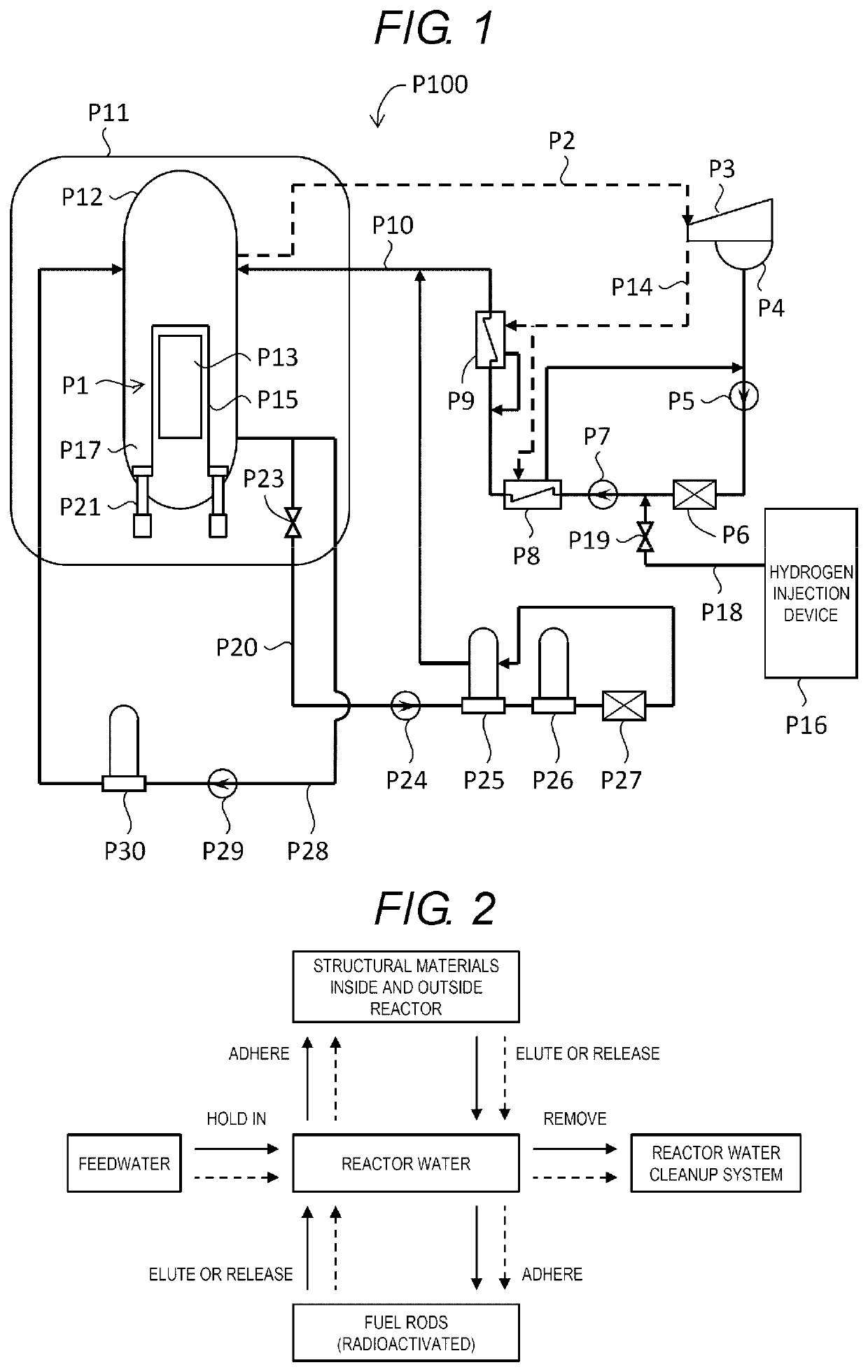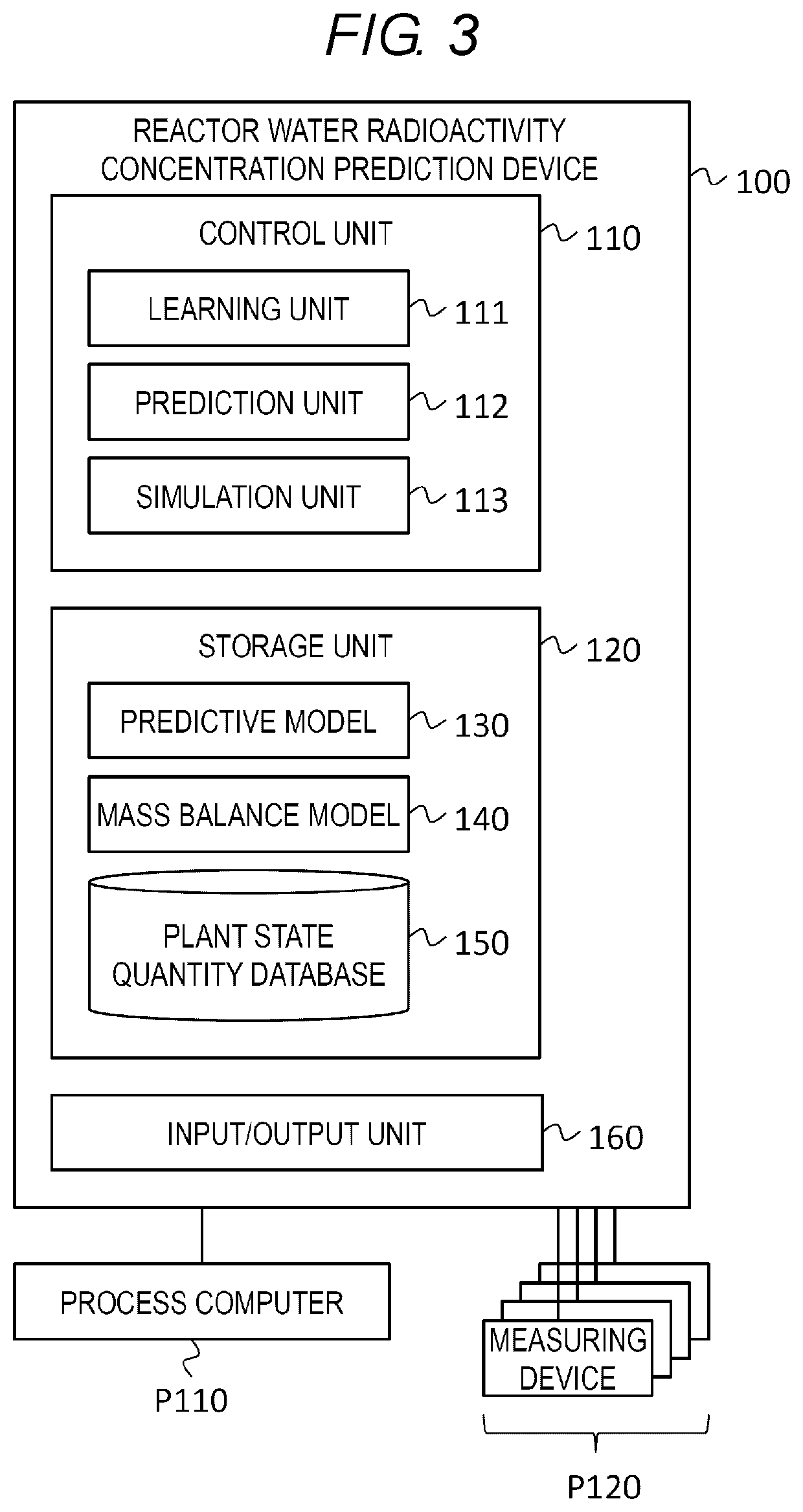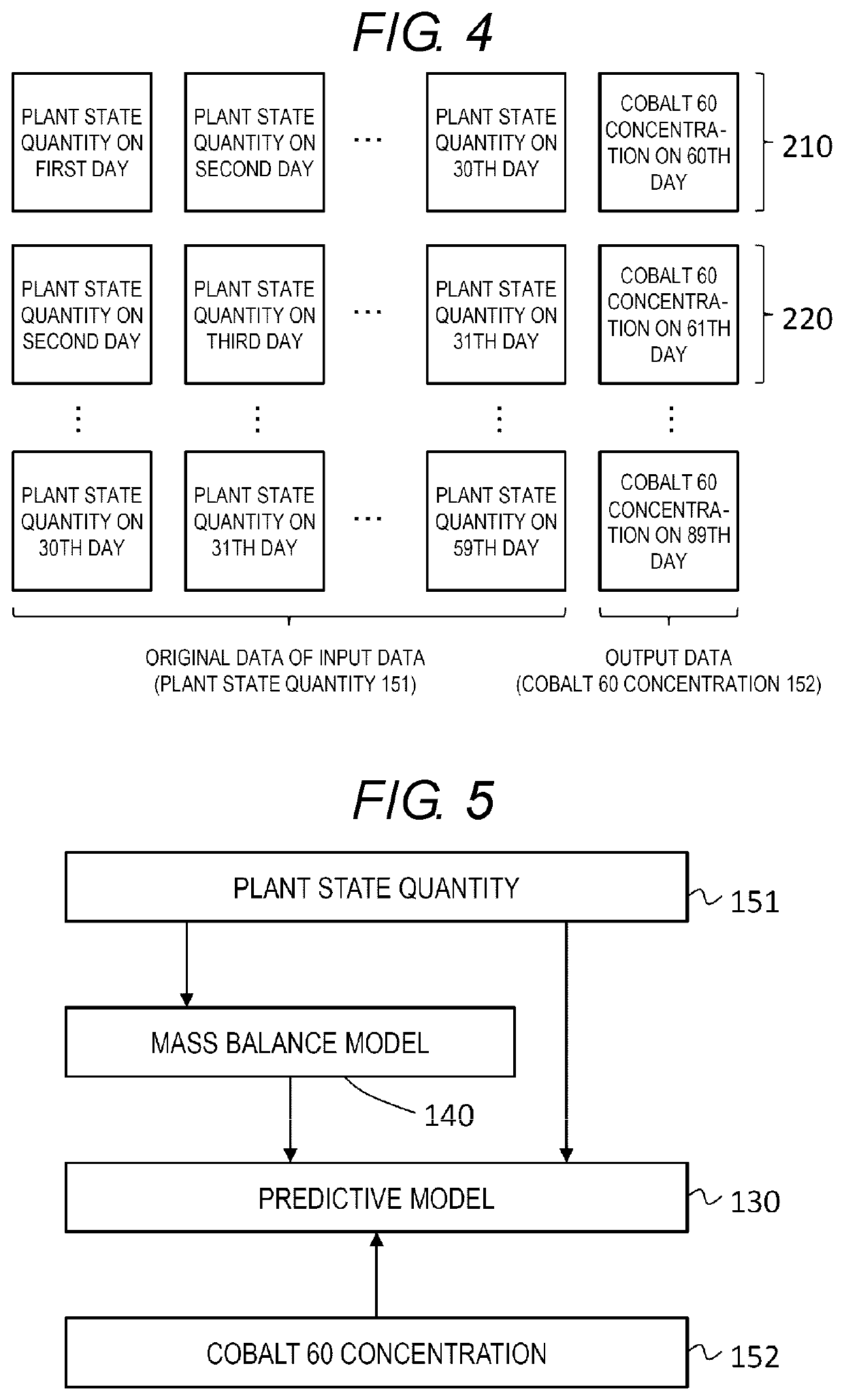Predictive Model Construction Method and Prediction Method
- Summary
- Abstract
- Description
- Claims
- Application Information
AI Technical Summary
Benefits of technology
Problems solved by technology
Method used
Image
Examples
Embodiment Construction
[0029]A nuclear power plant to be predicted and a simulation model (mass balance model) for estimating a change in radioactivity in reactor water will be described before a reactor water radioactivity concentration prediction device in an embodiment for carrying out the invention is described.
[0030]FIG. 1 is an overall system configuration diagram of a nuclear power plant P100 according to the present embodiment. A schematic configuration of the nuclear power plant P100 (for example, a boiling water nuclear power plant) to which the reactor water radioactivity concentration prediction device according to the present embodiment is applied will be described with reference to FIG. 1.
[0031]The nuclear power plant P100 includes a nuclear reactor P1, a turbine P3, a condensate water device P4, a nuclear reactor cleanup system, and a feedwater system. The nuclear reactor P1 installed in a nuclear reactor storage vessel P11 includes a reactor pressure vessel P12 with a reactor core P13 buil...
PUM
 Login to View More
Login to View More Abstract
Description
Claims
Application Information
 Login to View More
Login to View More - R&D
- Intellectual Property
- Life Sciences
- Materials
- Tech Scout
- Unparalleled Data Quality
- Higher Quality Content
- 60% Fewer Hallucinations
Browse by: Latest US Patents, China's latest patents, Technical Efficacy Thesaurus, Application Domain, Technology Topic, Popular Technical Reports.
© 2025 PatSnap. All rights reserved.Legal|Privacy policy|Modern Slavery Act Transparency Statement|Sitemap|About US| Contact US: help@patsnap.com



